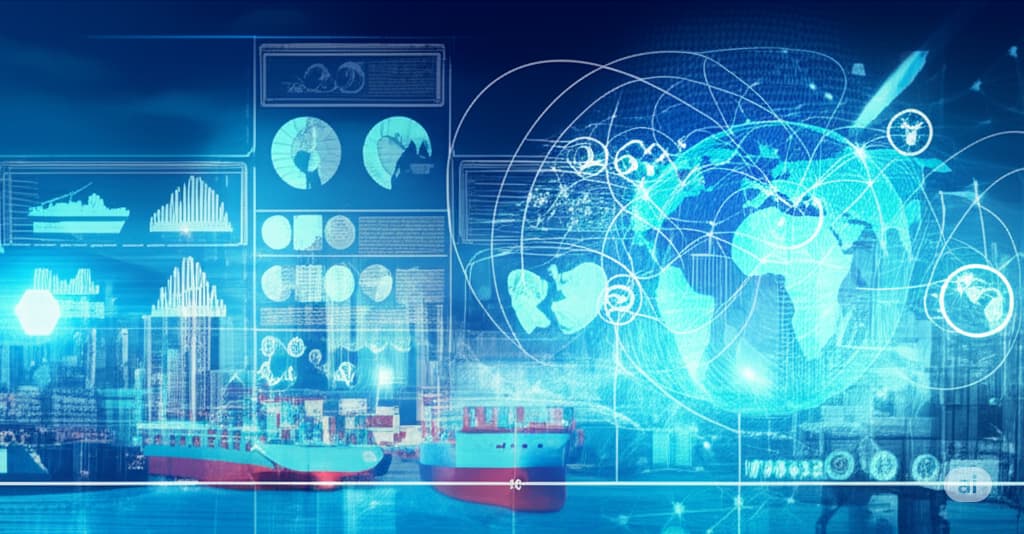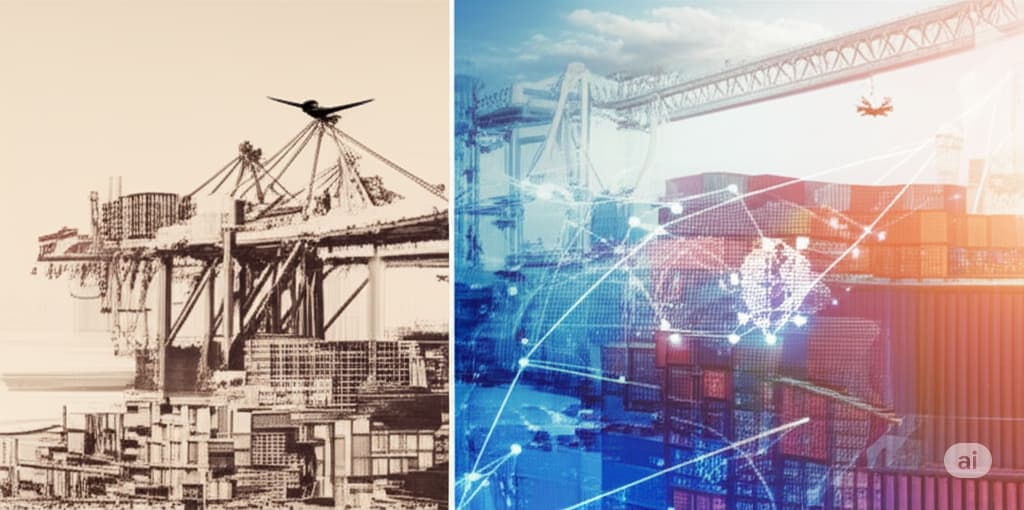Introduction: Why AI in Trade Finance Matters for China’s Global Trade
Imagine you’re a business owner in Shanghai, trying to export electronics to Europe. You know the product is good, the demand is high, but the paperwork, regulations, and payments make the whole process feel like navigating a maze. Welcome to the world of trade finance — a complex but vital part of international commerce that helps businesses like yours get paid on time while managing risks.
Now, sprinkle in AI in trade finance, a technology transforming how these cross-border transactions happen, making the process faster, safer, and smarter than ever before. For a trade powerhouse like China, which accounts for over 13% of the world’s total exports, this shift is not just important — it’s transformative.
In this article, we’ll explore the challenges China faced in trade finance, how AI is changing the game, and what this means for businesses and the global economy.
What Were the Key Issues in China’s Trade Finance?
Complex Paperwork and Lengthy Processes
Cross-border trade finance involves many documents — letters of credit, bills of lading, customs declarations, and insurance certificates. These often need manual verification by multiple parties. Delays and errors are common, causing slow payments and frustrated businesses.
Risk and Fraud Concerns
Fraud in trade finance can involve fake documents, bogus buyers, or risky counterparties. Without advanced tools, banks and businesses found it hard to detect fraud quickly. This leads to losses running into billions.
Lack of Transparency
The traditional trade finance ecosystem in China, as elsewhere, is often fragmented. Different banks, shipping companies, and customs officials operate in silos, making it difficult to track transactions end-to-end.
Access Issues for Small and Medium Enterprises (SMEs)
While large corporations usually get easy access to trade finance, SMEs struggle due to lack of credit history or collateral, limiting their ability to expand internationally.
Regulatory Complexities
China’s rapidly evolving regulatory environment, combined with international compliance standards like anti-money laundering (AML) and Know Your Customer (KYC) requirements, makes trade finance complicated and costly.
How AI in Trade Finance is Transforming Cross-Border Transactions
Automating Document Processing and Verification
AI-powered tools now scan and interpret trade documents within seconds, drastically reducing manual errors. For example, Optical Character Recognition (OCR) combined with Natural Language Processing (NLP) enables quick reading of invoices and contracts to spot inconsistencies or missing information.
Impact: Faster approvals, fewer disputes, and smoother workflows.
Detecting Fraud with Machine Learning
AI algorithms analyze transaction data to detect unusual patterns or suspicious behavior that might indicate fraud. For instance, if a buyer suddenly changes payment instructions or a shipment’s route seems irregular, the system raises red flags.
Impact: Reduced fraud losses and increased trust between trade partners.
Enhancing Risk Assessment and Credit Scoring
AI models use diverse data sources — from payment history to market trends — to give banks a more accurate picture of a company’s creditworthiness, especially useful for SMEs.
Impact: Broader access to trade finance and more personalized lending.
Streamlining Compliance
With regulations constantly changing, AI tools help banks automatically monitor transactions for compliance with AML and KYC rules, avoiding costly fines and delays.
Impact: Lower compliance costs and faster transaction times.
Facilitating Real-Time Tracking and Transparency
Some AI systems work alongside blockchain technology to create tamper-proof, transparent ledgers of trade transactions visible to all authorized parties.
Impact: Enhanced visibility reduces disputes and builds trust.
Real-World Relevance: What Does This Mean for Businesses and the Economy?
For Businesses
- Improved Cash Flow: Faster loan and credit approvals mean companies get paid quicker.
- Reduced Costs: Automation lowers administrative overhead.
- More Opportunities: Easier financing opens doors for SMEs to compete globally.
- Risk Reduction: AI-powered fraud detection protects profits.
For Professionals
- Efficiency Gains: Trade finance officers spend less time on routine checks and more on strategic tasks.
- Better Decision-Making: AI insights help bankers tailor products to client needs.
- New Skills Demand: Professionals need to understand AI tools and data analytics.
For the Economy
- Boost to Exports: Smooth financing helps China maintain its trade dominance.
- Financial Stability: Reduced fraud and better risk management strengthen banks.
- Innovation Spillover: AI adoption in trade finance accelerates broader digital transformation.
Statistics and Facts
- China’s cross-border e-commerce trade reached $1.69 trillion in 2022, showcasing the scale of international transactions that rely on trade finance. (Source: China Customs)\n
- According to McKinsey, AI can reduce trade finance processing time by up to 70%, potentially saving billions in operational costs. (Source: McKinsey Global Institute)\n
- The World Bank estimates that global trade finance gaps amount to $1.5 trillion annually, mostly affecting SMEs — a gap AI solutions aim to narrow. (Source: World Bank)\n
Historical Context: The Evolution of Trade Finance in China
Trade finance in China has evolved dramatically over the last few decades. Initially dependent on manual paperwork and face-to-face banking relationships, the sector saw digitization gains in the 2000s with electronic document submission and online banking. However, these improvements only scratched the surface.
The rise of AI technologies in the late 2010s marked a leap forward — from reactive fraud detection to predictive analytics and end-to-end automation. The Chinese government’s push for digital transformation and financial inclusion further accelerated AI adoption, making China a leading innovator in AI-powered trade finance.
Practical Takeaways for Businesses and Policymakers
For Businesses
- Adopt AI-Enabled Platforms: Seek banks or fintech partners who use AI for trade finance to enjoy faster and safer transactions.
- Invest in Digital Skills: Equip your team to work with AI tools and data analytics.
- Enhance Transparency: Use blockchain-based solutions where possible to improve transaction tracking.
For Policymakers
- Promote AI Standards: Ensure interoperability and security standards for AI tools in trade finance.
- Support SMEs: Provide incentives for small businesses to access AI-powered trade finance products.
- Encourage Collaboration: Foster partnerships between banks, fintechs, and regulators to create a resilient trade finance ecosystem.
Conclusion: The Future is AI-Powered and Promising
AI in trade finance is not just a technological upgrade — it’s a fundamental shift reshaping how China conducts its international business. By solving age-old problems of complexity, risk, and inefficiency, AI is unlocking new potential for exporters, banks, and the global economy.
As AI continues to mature, the question is: How quickly can businesses and regulators adapt to harness its full power?
What do you think — will AI soon make cross-border trade as seamless as buying something online? Let’s continue this conversation.
References
- China Customs: http://english.customs.gov.cn
- McKinsey Global Institute, “AI in Financial Services”: https://www.mckinsey.com/industries/financial-services
- World Bank Trade Finance Gap Report: https://www.worldbank.org/en/topic/tradefinance
- Reuters, “China’s Cross-Border E-commerce Growth”: https://www.reuters.com
- IMF reports on digital finance: https://www.imf.org/en/Topics/financial-technology






